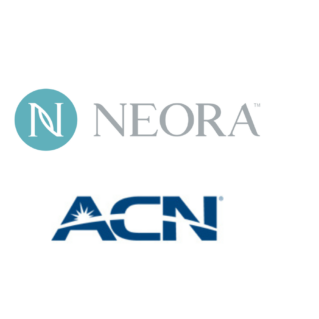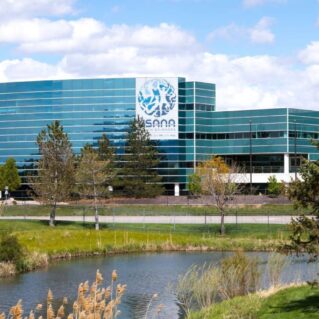Click here to order the January 2018 issue in which this article appeared.
PRINCESS HOUSE
Founded: 1963
Headquarters: Taunton, Massachusetts
Top Executive: CEO Connie Tang
2016 Revenue: $195 million
Global 100 Ranking: No. 72
Products: Appliances, Home Decor, Kitchenware
|
Connie Tang |
For more than five decades, Princess House’s finely crafted crystalware earned such customer accolades as “timeless” and “beautiful.” Some even called the decorative but functional pieces “jewelry for the kitchen.” As the Taunton, Massachusetts-based company celebrates its 55th anniversary this month, a new descriptor can be added to its product line: “healthier.”
According to CEO Connie Tang, the upcoming messaging for 2018 ties to a revitalized vision for the company: one in which it promotes healthy living. This applies not only to the new cookware line, Vida Sana, designed to maintain nutrient value during cooking. It really signifies the overall Princess House business opportunity that strives to help consultants achieve financial health, a healthy work–life balance and a healthy lifestyle.
“Our products have evolved,” says Tang. “The company and brand have evolved from breakable to durable—from crystalware to cookware. With marketplace changes, preference changes and even demographic changes, to meet the needs of customers, consultants and business owners, an evolution has occurred.”
This includes in-house changes to the company infrastructure as well. Just five years ago, the only way an interested entrepreneur could join Princess House was by faxing in an application. Tang has made significant investments in technology to ensure her staff and sales field have the tools they need to compete in today’s marketplace.
Continued Growth
While there is no major event planned to celebrate the company’s 55th anniversary, Tang says there will be a theme that runs through the company’s programs and communications throughout the entire year, including the annual trip incentive. For this event, Tang has charted Royal Caribbean for an Alaskan cruise. However, while company milestones will be remembered during the year, she says she wants to be very thoughtful and make sure the focus is a future-forward effort. Yes, it will be a time to look at how far the company has come, but, more importantly, it will be a time to recognize how much opportunity there is going forward.
It is easy for Tang to be optimistic about the future. Princess House has achieved seven consecutive years of growth. Last year the company had $195 million in sales, up $25 million from 2015. And since Tang’s tenure began, the company has logged a 36 percent sales increase. She attributes a portion of this continued success to clarity in the organization’s mission throughout every level of the company.
|
“It started with being clear on who we were, and who we want to be,” Tang says. “In 2012 it was about getting very clear in understanding what does move the business and what does not. Departments have to match up operationally with what you are doing. Alignment is the bridge that connects what is seemingly conflicting interests.”
A second reason, according to Tang, is that Princess House is not an international company. It operates primarily in the United States, with some entry into Puerto Rico. As a single-market company, it remains focused on expanding its domestic markets, including the larger ones of Southern California, Houston, Dallas, Chicago and Atlanta. Until the infrastructure is in place—including an e-commerce platform that is a critical component of international expansion—Tang says the company will remain focused on the opportunities to expand domestically.
“In five years I see our salesforce demographics diversifying,” says Tang. “New growth has to come from a younger demographic.”
Princess House is well known in direct selling circles for having a salesforce and customer base that are predominantly Hispanic. The company has great brand equity in the Hispanic market—a solid reputation as a company and for the quality products it brings to market. Tang believes the immediate future for her company involves expanding this market further.
“We have a first-generation demographic,” she says. “I see that deepening into younger Hispanics. I see a lot of room for us to continue.”
According to an August 2017 Pew Research Center analysis, Hispanics account for more of the nation’s overall population growth than any other race or ethnicity. The largest pockets of Hispanic populations can be found in California, Texas and Florida. Princess House’s top two markets are Southern California and Houston, making the company well-positioned in its outreach efforts.
Demographic Research
Up until 2017, Princess House did not have complete data of the age demographic of its sales field. At the beginning of 2017, the company began tracking ages, and as of October, research showed that 35 percent of the people joining the company were younger than 35.
Statistics also showed that of the currently 25,000 consultants in the company, they are more than 85 percent Hispanic and primarily female. What is interesting to note about this ethnic group is that, according to a 2017 U.S. Direst Selling Association report, Hispanics derive greater annual income from direct selling than that of non-Hispanics, and 89 percent of Hispanic direct sellers are likely to recommend the channel to others. And that bodes well for Princess House.
|
As Tang mentioned, she sees the key to growing domestically to be reaching out to the next generation, and that is what Kelly Harte, vice president of sales strategy and development, has been focused on this past year.
“We have a very solid core market, and we are helping our core leaders reach out to other people—the next generation coming in,” says Harte.
However, having a predominantly Hispanic salesforce did not come without its challenges this past year. The Donald Trump administration’s hard stance on immigration into the U.S.—specifically, the Deferred Action for Childhood Arrivals (DACA)—caused much fear within the Hispanic community, leaving some Princess House consultants to wonder about the future of their businesses.
“It’s been a little challenging within the Hispanic market due to some of the political issues earlier in the year regarding immigration,” said Harte. “[The immigration laws] affect not only the independent consultants, but their customers and hostesses as well.”
However, despite politics, Harte and her team continued to move forward. Research showed that many of the company’s potential prospects were more interested in smaller get-togethers rather than attending larger events. So, Princess House developed its version of a virtual Cafecito, an online coffee chat in which a small group in one house can be virtually linked to other houses via Skype, Facebook Live or any similar digital tool.
“We have been focused on teaching our leaders how to conduct a Cafecito,” says Harte. “We also have created a tabletop tool to help them recruit in a very simple, standardized format.”
In 2018, Princess House will be implementing a learning management system that will allow consultants to take full classes or just browse reading materials or videos. The first course to be offered will be “How to Do a Cafecito,” which Harte is currently filming.
Princess House consultants are recognized on stage for their accomplishments.
Healthy Cooking: Vida Sana
While the Cafecito has been a popular recruiting tool, what is really generating excitement among consultants is the new Vida Sana collection. Introduced in July at the national conference in Las Vegas, it was officially launched using Facebook Live on Sept. 15. Currently available to hostesses only, it will join Princess House’s product lines—cookware, tabletop serving, tools, food storage, décor, organization, cleaners, cutlery and bakeware—this year.
“The by-product of Vida Sana was deep insight into what consumers want in terms of health—the empowerment they are looking for to be able to eat healthy and to be able to support their families in an effort to eat heathy,” says Victoria Vilbrandt, vice president of marketing, strategy and solutions. “At the same time, they have the option of choosing when they want to eat healthy.”
|
The Vida Sana cookware allows users to cook vegetables, proteins and meats with little to no oil or water. The skillet’s lid creates a suction effect for a tight seal, allowing for very even heat generation; the absence of or minimal use of oil used to cook the food helps to maintain nutrient value. As a result, consumers have a healthier cooking option.
Because “healthier” is a word that gets thrown around a lot—with “healthy” meaning something different for everyone—Vilbrandt says that Princess House wanted to take “health” and quantify it. So the company worked with Eurofins Scientific, an international life-science company that provides analytical testing, to test how nutrients were being kept in foods cooked in Vida Sana. The laboratory tests show 67.4 percent of the nutrient value of foods cooked in Vida Sana is maintained.
“Vida Sana was part of our product roadmap, but the idea did come from what health means in terms of a social economic standpoint, a cultural standpoint and a geographic standpoint,” says Vilbrandt. “All that was taken into account as we delivered this product. We are able to empower our field to say this is what consumers are looking for and this is what we delivered. We can say ‘we are giving you the tools and documentation, so that you can feel absolutely confident in speaking to your customers about why this product is different.’ ”
Princess House consultants take part in celebrating the company as well as each other during a recent event.
New Technology Initiatives
Princess House’s goal has also been to empower consultants by providing them with the latest tools to compete in the marketplace. That meant taking a hard look at the use of technology at the company. When she took over the reins of Princess House in 2012, Tang had more challenges than the fax machine being the only way to connect with the company. Legacy platforms did not support the type of growth needed in the direct selling channel, particularly regarding mobile technology and social selling platforms. And, to this day, Princess House does not have an e-commerce platform, which Tang believes makes the company one of a few—if not the only—direct selling companies without such capability, according to Princess House’s own research.
A new platform is on its way, though. While there is no e-commerce functionality for consumers visiting the company website or visitors viewing consultants’ websites, Princess House will be launching e-commerce capability for both in the second quarter of 2018. This will provide consultants with more opportunities to engage with existing and new customers as well as assist them in creating a new channel of distribution.
Princess House already has developed several technology tools to help with recruiting and purchasing. The company’s Start Now app enables consultants to recruit and sign up prospects. The My Princess House app, which was launched in December 2015 and features all the tools needed by consultants to get their Princess House business moving, now has more than 10,000 downloads.
“We have over 150,000 sessions by individuals interacting with the My Princess House app,” says Vilbrandt. “The 10,000 downloads and 150,000 sessions are our two indicators that our field is embracing technology.”
The field also is embracing social media. In the past three years the company has grown from having a very small following, about 22,000 followers, to hundreds of thousands today. Princess House has several Facebook pages, including a public Facebook page in English that currently has more than 300,000 followers, and a public Facebook page in Spanish with more than 35,000 followers. In addition, there is Tang’s Facebook page for her first book, Fearless Living, as well as a Facebook group page that allows Princess House executives to speak to the field.
|
While Facebook allows communication among the Princess House community, Vilbrandt notes that the company also has used it extensively as a means of research, creating unique hubs where they can speak to target markets to learn more about them and get their opinions.
In addition to Facebook, the company uses Twitter, Instagram and Pinterest. For the past few years Princess House has been largely focused on acquisition and engagement as the two key performance indicators of its social media strategy. In December, the company launched its new corporate and replicated consultant website that allows consultants the ability to copy and paste the link to social media channels and connect an order to an existing order for tracking purposes. Vilbrandt believes this new capability will help to make the acquisition and engagement KPIs grow into conversions.
“With the new corporate site and improved lead funnel, we look forward to conversions as the next step in the evolution of our social media,” she says.
Future-Forward
The Princess House purpose statement says that “We believe our power is our people and our people is our field.” It is that core belief, a mutual agreement between the executive team and the field, that has helped the company overcome the challenges and build on a very optimistic future.
“It is important that we, as a company, and I, as a leader, maintain a mutual agreement that we communicate frequently, that we maintain contact frequently, and that we are transparent on partnering on key initiatives so that we are aligned,” says Tang. “We are not perfect; we have had misses. But there is a commitment to do that. Motivating them comes from my messaging about the future and overcoming obstacles.”
As Vilbrandt notes, at the end of the day, Princess House is a direct selling company and it has one mission. “Our goal is to inspire what we call ‘the dreamers,’ reward excellence, and transform lives,” she says. “That is the core of who we are and the core of what our field is about. They embrace it; we embrace it. That’s what keeps us going every day.”


